#gullah
Explore tagged Tumblr posts
Text
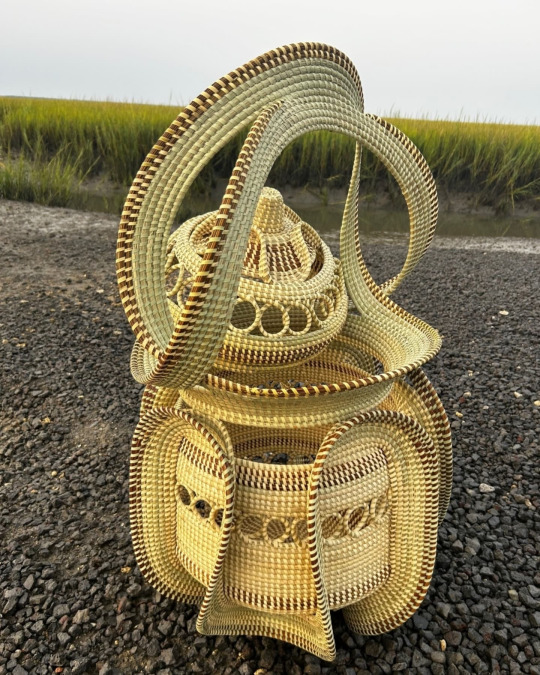
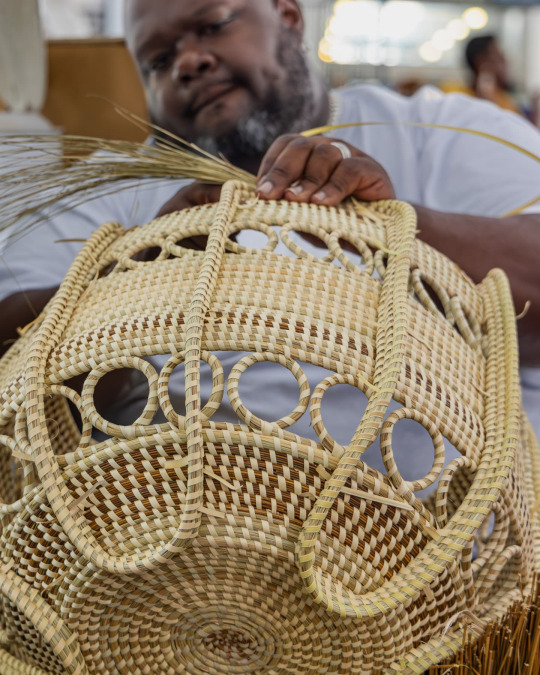
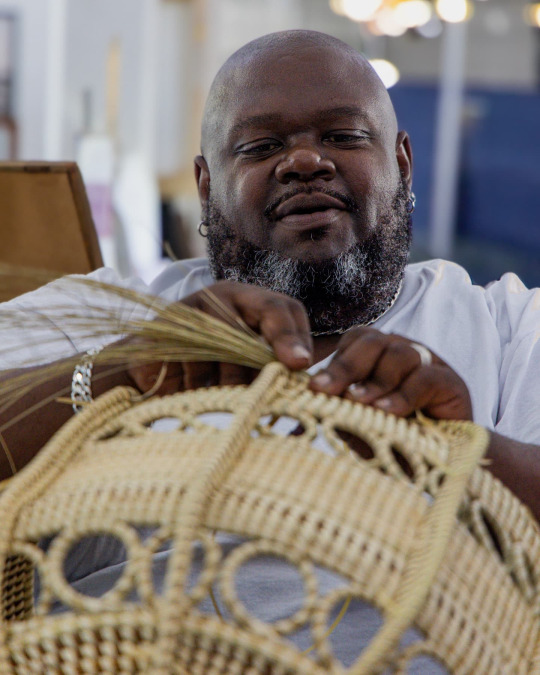
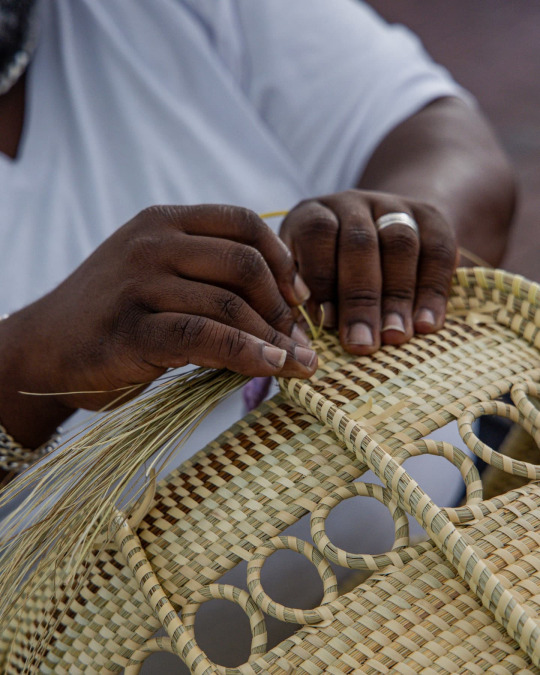
The Sweetest Movements of Grass, by Corey Alston.
21 notes
·
View notes
Text
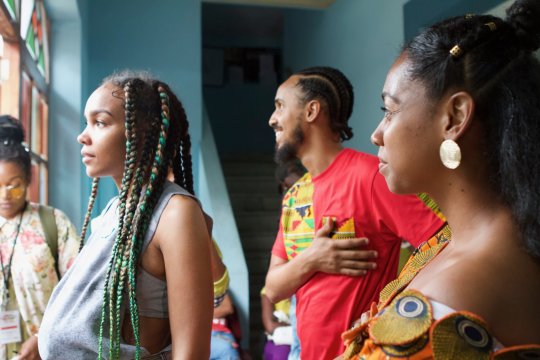
According to Dr. Yvonne Chireau, "Hoodoo is an African American-based tradition that makes use of natural and supernatural elements in order to create and effect change in the human experience."
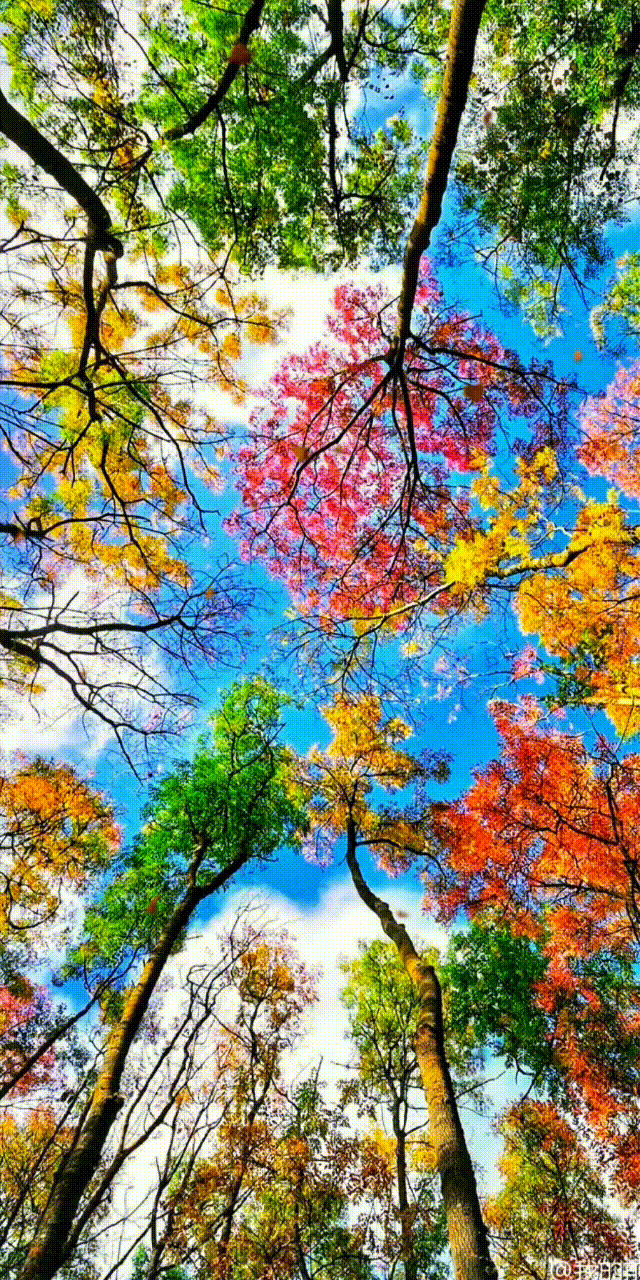
Hoodoo was created by African Americans, who were among over 12 million enslaved Africans from various Central and West African ethnic groups being transported to the Americas from the 16th to 19th centuries (1514 to 1867) as part of the transatlantic slave trade. The transatlantic slave trade to the United States occurred between 1619 and 1808, and the illegal slave trade in the United States occurred between 1808 and 1860. Between 1619 and 1860 approximately 500,000 enslaved Africans were transported to the United States.
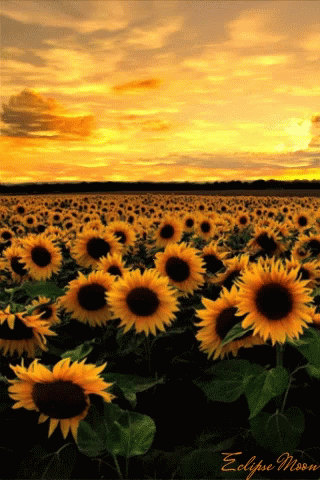
From Central Africa, Hoodoo has Bakongo magical influence from the Bakongo religion incorporating the Kongo cosmogram, Simbi water spirits, and Nkisi and Minkisi practices. The West African influence is Vodun from the Fon and Ewe people in Benin and Togo following some elements from the Yoruba religion. After their contact with European slave traders and missionaries, some Africans converted to Christianity willingly, while other enslaved Africans were forced to become Christian which resulted in a syncretization of African spiritual practices and beliefs with the Christian faith.
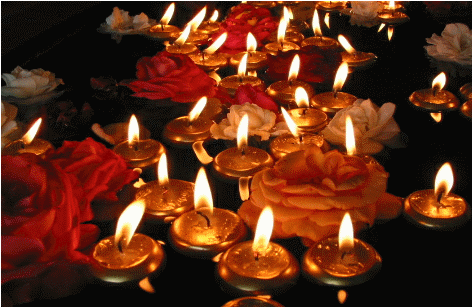
Enslaved and free Africans learned regional indigenous botanical knowledge after they arrived to the United States. The extent to which Hoodoo could be practiced varied by region and the temperament of the slaveholders. For example, the Gullah people of the coastal Southeast experienced an isolation and relative freedom that allowed retention of various traditional West African cultural practices. Gullah people and enslaved African-Americans in the Mississippi Delta, where the concentration of slaves was dense, Hoodoo was practiced under a large cover of secrecy. The reason for secrecy among enslaved and free African Americans was that slave codes prohibited large gatherings of enslaved and free African people. Slaveholders experienced how slave religion ignited slave revolts among enslaved and free African people, and some leaders of slave insurrections were African ministers or conjure doctors
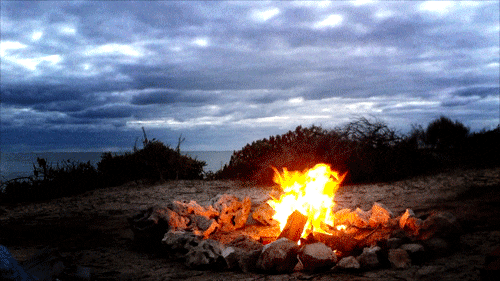
#african#afrakan#kemetic dreams#africans#brownskin#afrakans#brown skin#african culture#afrakan spirituality#bakongo#congo#conjure#ancestor veneration#rootwork#hoodoo#nkisi#simbi#botanical#botanic garden#gullah#gullah geechee#gullah gullah island#mississippi#mississippi delta#slave codes#vodun#cosmogram#yoruba#america#african american
232 notes
·
View notes
Text
IMAGES:
HAINT BLUE ON THE WINDOWS, SHUTTERS, DOORS OF SOUTHERN HOUSES




39 notes
·
View notes
Text

"I wonder if our white fellow men realize the true sense or meaning of brotherhood? For two hundred years we had toiled for them; the war of 1861 came and was ended, and we thought our race was forever freed from bondage, and that the two races could live in unity with each other, but when we read almost every day of what is being done to my race by some whites in the South, I sometimes ask, 'Was the war in vain? Has it brought freedom, in the full sense of the word, or has it not made our condition more hopeless?' In this 'land of the free' we are burned, tortured, and denied a fair trial, murdered for any imaginary wrong conceived in the brain of the negro-hating white man. There is no redress for us from a government which promised to protect all under its flag. It seems a mystery to me. They say, 'One flag, one nation, one country indivisible.' Is this true? Can we say this truthfully, when one race is allowed to burn, hang, and inflict the most horrible torture weekly, monthly, on another?"
Everybody raise a glass to the memory of Susie King Taylor (neé Baker), teacher, author, field nurse, and Civil War hero. Susie holds the singular distinction of being the first Black woman to write and publish a memoir of her wartime experiences. Born enslaved in 1848 Savannah, Georgia, Susie was fortunate enough to be able to attend secret schools taught by Black women --despite the state's harsh literacy laws regarding slaves. Her principal teacher was a free woman of color who is only ever named as "Mrs. Woodhouse," a friend of Susie's grandmother, Dolly Reed, and over the years Susie would herself surreptitiously educate other enslaved persons. At the age of 14 she became free when her uncle led her out to a Union gunboat patrolling near Fort Pulaski (in Confederate hands at the time). Along with many other formerly-enslaved Black refugees in the aftermath of the Battle of Port Royal, Susie sought safety behind Union lines on the South Carolina Sea Islands.
Expediency led Susie to attach herself to the 1st South Carolina Volunteers, later known as the 33rd U.S. Colored Troops --the very first Black regiment in the U.S. Army. Formed in 1862, this unit boasted a large number of Gullah recruits. Having originally signed on as a regimental laundress and cook, Taylor's literacy quickly elevated her to the role of reading and writing instructor for many of the black Union soldiers during their off-duty hours. She also served as a field nurse. Military governor Rufus Saxton took notice of Taylor's talents and entrusted her with munitions and equipment responsibilities far beyond the scope of a laundress. She married a Sergeant Edward King of Company E in 1864, and the 33rd Regiment itself ultimately dissolved in 1866. The Kings settled in Savannah and established a school for Black children; unfortunately Edward died in a dockside accident only a few months after the birth of their son. Susie moved to Boston in 1870 and joined the Women's Relief Corps (of which she would eventually become president).
By 1879 Susie had remarried a Russell Taylor of Boston, and while she continued her work with the Women's Relief Corps, had also begun work on a memoir of her time with the regiment --originally intended for her son, she instead opted to publish the essays in 1902 as Reminiscences of My Life in Camp with the 33D United States Colored Troops, Late 1St S. C. Volunteers.
So... yeah. Go pick that one up and give it your undivided attention. And then pour one out for Susie, who died on this date (October 6), 1912, in Boston. She is buried at Mount Hope Cemetery.
#blm#black lives matter#black history#susie king taylor#gullah#civil war#abolition#teachtruth#dothework
15 notes
·
View notes
Text
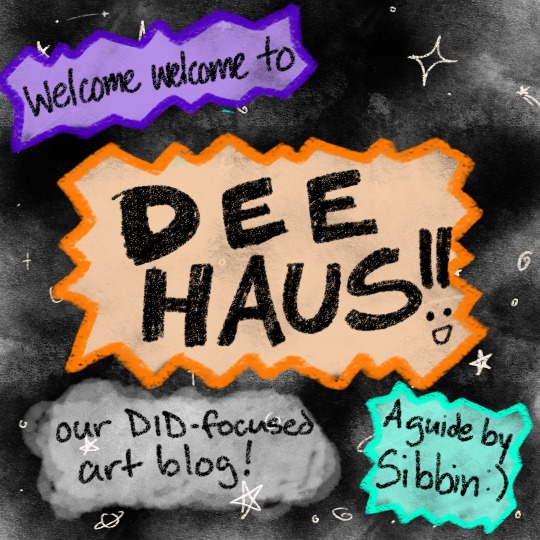
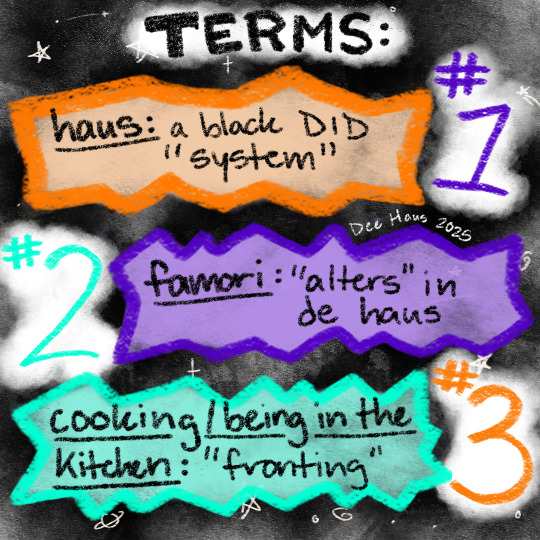

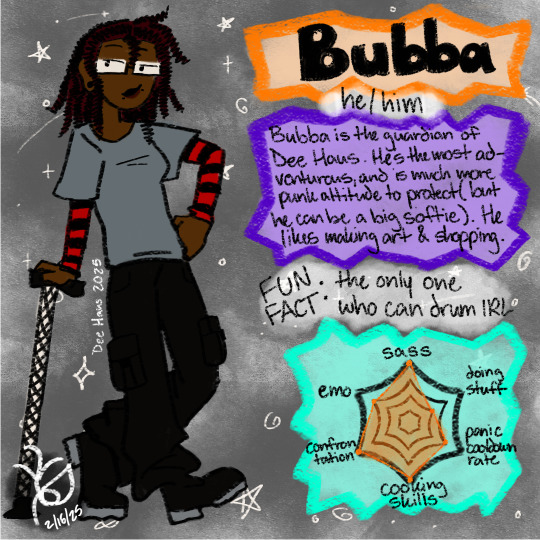
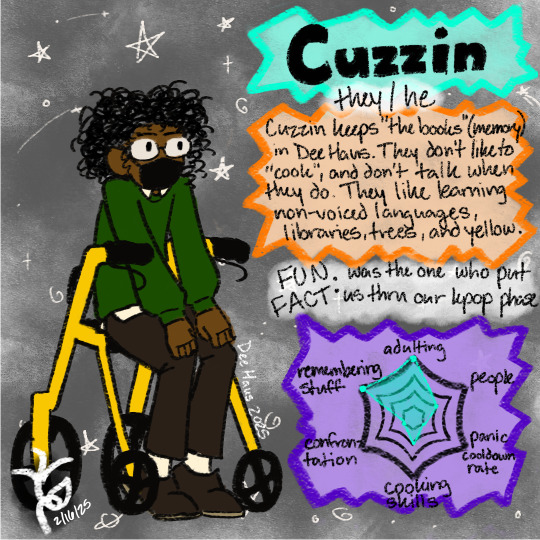
Yayyy Haus Intro! (plus the text for the pictures!!!!)
*** Check blog intro post more details on us!***
Welcome welcome to Dee Haus!! Our DID-focused art blog! (A guide by Sibbin :))
Terms: (familiar term in quotations)
Haus: a black DID “system”
Famori: “alters” in de haus
Cooking/being in the kitchen: “fronting”
The term haus being used specifically for Black systems is not at all a thing, I’ont think. But our haus uses it for us, and as a system who is Black in de bodi and loves our kulcha and words, we would love to see it be claimed as that and invite any black-bodied system to do so!! We chose it because a lot of Black households use the term “house” instead of home I noticed, and then as we learned more about hoodoo and vodou, it turns out historic Black folk magic gatherings for protection were often in AAVE called the “haus” dey was under (like Marie Lavaeu haus) So if Haus is a place of protection and healing, what better a name for our system :) ((also: I'm not tryna limit haus' usage as a word only fa us since I know it exists in other languages too. But I long for our black community to have more words for us neurodivergent folx in it!))
Famori is combining two different words: family and ori, which is the Yoruban word for head, so head family! Not all systems are related to all their alters— but in Black families we tend to just call anyone we care about family, so I thought it’d work well.
We just call fronting cooking for some reason. Dass juss how our headspace came prepackaged, I guess? I think it’s because we often cook for the people we’re looking out for? I dunno, I think it’s cute.
Our names are also a mix of blaccent as well as Gullah Geechee english :) Sibbin is sibling, Bubba is brother, and Cuzzin is cousin. We aren’t all related like that and those aren’t our real names, but fa de blog dey cute.
Okey here de famori: (written from the pictures above)
Sibbin (they/them)
Sibbin is the main person to “cook”(front) in Dee Haus. They like making art and sharing messages. Also, Hello Kitty, Nintendo, and culture of any kind.
Fun Fact: doesn’t cuss ever
Creativity: +++
‘Tism: +++
Escapism: ++++
Confrontation: +
Panic Cooldown Rate: ++
Cooking skills: ++++
Bubba (he/him)
Bubba is the guardian of Dee Haus. He’s the most adventurous, and is much more punk attitude to protect (but he can be a big softie). He like making art & shopping.
Fun Fact: the only one who can drum IRL
Sass: ++++
Emo: +++
Doing stuff: ++
Confrontation: ++++
Panic Cooldown Rate: +++
Cooking skills: ++++
Cuzzin (they/he)
Cuzzin keeps “the books” (memory) in Dee Haus. They don’t like to “cook”, and don’t talk when they do. They like learning non-voiced languages, libraries, trees, and yellow.
Fun Fact: was the one who put us thru our kpop phase
Adulting: ++++
Remembering stuff: ++++
People: ++
Confrontation: +
Panic Cooldown Rate: +
Cooking skills: ++
Okee, I hope I explained everything well and made a good first impression, we’re all excited to share more and get to know folx :D
#dee haus#did haus#famori#system intro#did#didsystem#black system#sysblr#didblr#plural#trans#enby#black boi#qtbipoc#gullah#gullah geechee#blackblr#aave#artist#new to tumblr#I messed up drawing the wheelchair#I just noticed :(#but I was excited to post and wanted it done XD#we actually use all those mobility aids irl too btw#interchangably#not all at once#but that’d be sick too#also i stg we were in a full trance while making this it was 4am when we finished#and I DO NOT remember it#and neither do bubba so haha
13 notes
·
View notes
Text
ID in Alt Text!
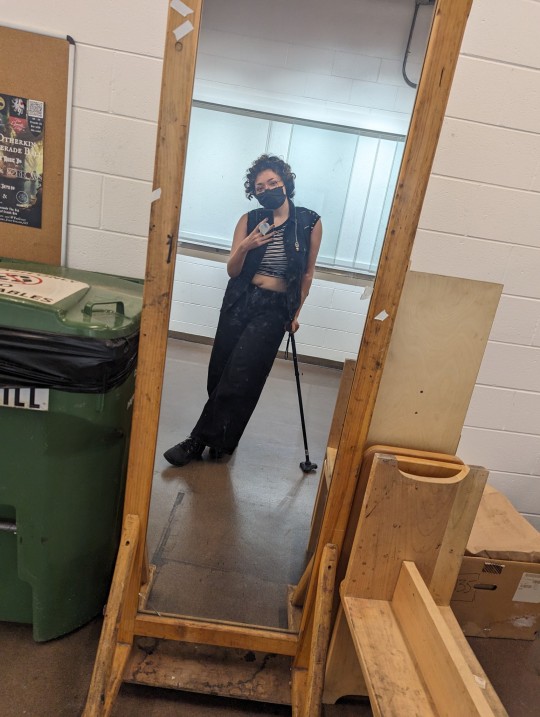
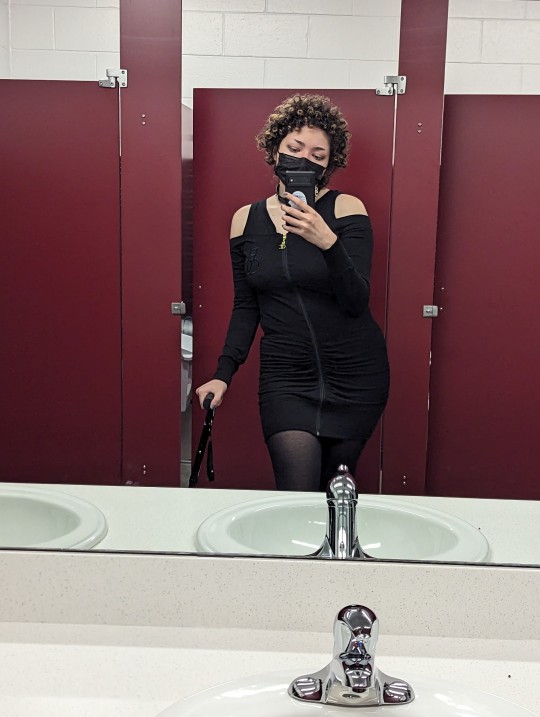
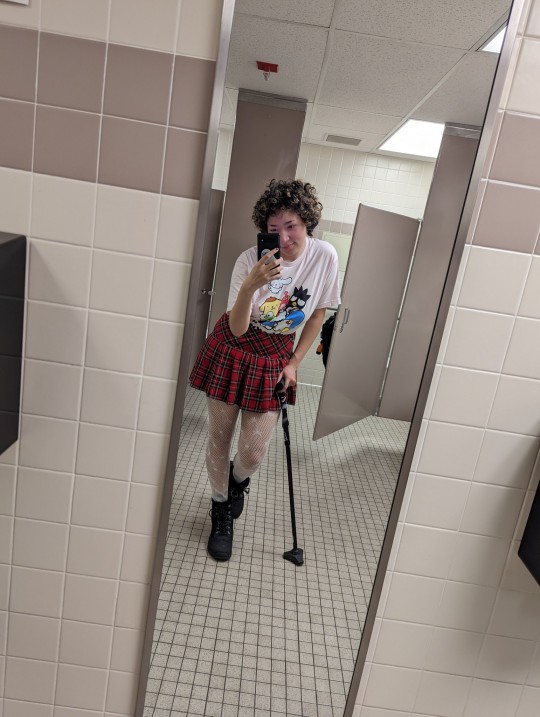
Hey, sorry I haven't been doing my daily outfit posts lately-- I guess I never mentioned why I started them, but it's this personal project that I'm working on where I take a picture (though, in all honesty, it's a lot of pictures lol) in whatever I'm wearing and I feature my cane to promote awareness and give representation to other cane users and members of the cpunk and Physically Disabled community. I'm working on building up the courage to take these pictures outside as well, because I do them on campus, but we deserve to see ourselves outside as well!
The reason I haven't been keeping up with it is because my partner and I have really been really struggling financially as well as with our mental health (and me with my physical health as well, obviously lol) we moved across the country to go to school and it is So Hard-- I had to drop three out of five of my classes because the course work was just too much in volume and I need a job really bad (which is going to be Hard to do since we don't even know why I'm in such chronic pain yet 🙃 it's hard not to feel defeated!)
Either way, I think going to start posting them with the tag #TheVainCanes and #MobilityAidVainity but I'm also going to host a poll for some options bc I want this to be a widespread community thing!
I'm choosing these names because I've seen from both ableds and disabled elitists this idea that we and our mobility aides need to look like they're fresh out the hospital for us to be Believed and deserving of respect, and anything beyond that voids our suffering and invalidates our experiences-- and I think that's reductive, harmful, and just plain wrong! Our mobility aides are an extension of ourselves and we deserve to dress them up however we want. We deserve representation, and the normalization of Joy and Having Personality While Disabled.
This will be intersectional as well (bc. I mean look at me. Also I don't need a reason!) , people from all identities are welcomed and encouraged to join! This is meant to be a celebration of Us, Disabled, BIPOC, LGBTQIA2S+, and All That Jazz! (If you use a mobility aid, you're in!) We're beautiful gorgeous handsome devils and I think we'd do good seeing how good we all look in a designated tag
Also my cash app and Venmo are @/cherubpunque 👀 if anyone has some spare change I could have that would be an amazing help towards feeding me, my partner, and our two cats!!
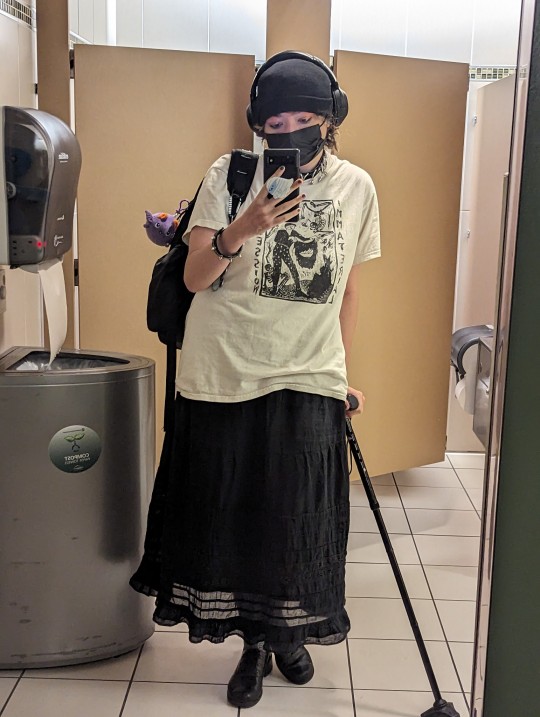

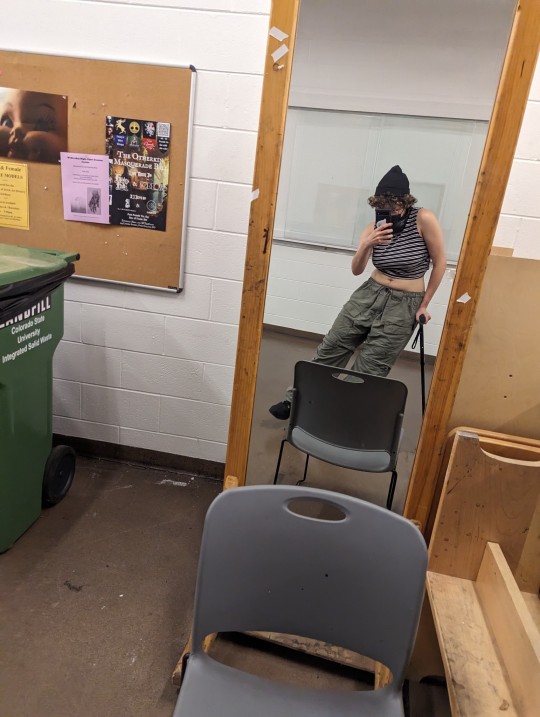
To kick things off, I am a 2S, Afroindigenous person (Gullah and Kanien'kehá:ka!) who experiences chronic pain and fatigue. I have PTSD and a few other brain things going on, less than perfect eyesight, and a great passion for Art, Music, Subculture, and Helping Others whenever and however I can! I'm majoring in art and am working towards becoming a published graphic novelist. Idk I just have a lot of love and support to give, and a big need for love and support for myself as well, and I'm hoping to offer us a good opportunity for us to connect in a space that's just for us! We're already living outside of society's expectations for health, so why should we let these folks decide the way we look while doing it? Express yourself! (I'll also be tagging myself in future as #mothie so you can find me in the tags! Anyways, I gotta go lay down. My back hurts.)
#cpunk#cripple punk#cane user#chronic pain#chronic illness#solarpunk#diy punk#c punk#chronic fatigue#afro indigenous#indigenous#alt subculture#gullah geechee#gullah#self expression#mobility aid#TheVainCanes#MobilityAidVanity#TheVainCanesProject#MobilityAidVanityProject#punk#punk fashion#**i always mask in public!! i just take it off for these photos while im completely alone**#but i do like to spice it up with a fabric mask over it for a little extra fashion#face mask#spoonie#black mutual aid#trans mutual aid#queer mutual aid#indigenous mutual aid
122 notes
·
View notes
Text
youtube
Hungry Planet showcases how scientists and communities are working to keep food on our plates for generations to come. In this episode, Niba visits Charleston, South Carolina, where she learns how Carolina Gold Rice became a staple of the U.S. thanks to the Gullah/Geechee community. Niba also talks to Dr. Terri Long to explore how her research on iron uptake in plants could fight malnutrition and anemia by revealing a path toward creating staple crops like rice that contain more iron.
Learn more:
Luana Graves Sellars https://lowcountrygull...
Rollen Chalmers https://rollensrawgrai...
Akua Page https://www.futnuss.com/
Dr. Terri Long https://cals.ncsu.edu/...
*additional credit: Production Assistant - Ariel Traylor
Hungry Planet is a joint production between Helicase Media LLC and STEMedia Inc.
#PBS Terra#solarpunk#usa#south carolina#Charleston#rice#food#Carolina Gold Rice#Gullah#Geechee#gullah geechee#Terri Long#Youtube
14 notes
·
View notes
Text
youtube
Someone made a reimagining of Gullah Gullah Island
@queen-shiba
#Gullah#Geechee#gullah geechee#gullah gullah island#soulaan#afro american#african american#black american#Youtube
7 notes
·
View notes
Text
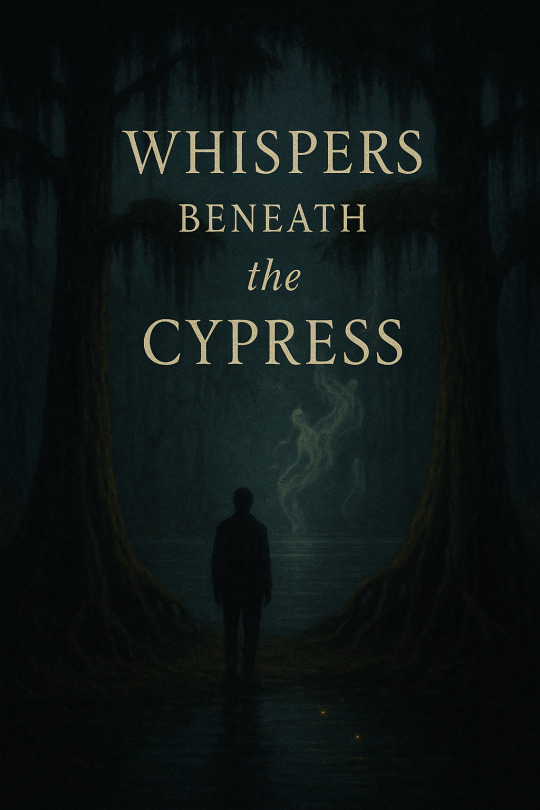
Step quietly. The Hollow is listening.
⸻
Beneath the moss-draped oaks of Marais Clair, where the tides whisper secrets and shadows dance with the wind, two souls are drawn together by threads unseen. Asa, a craftsman whose hands shape wood like stories, and Naima, a keeper of ancient remedies and quiet strength, find their paths quietly entwined in a world where the past is never far behind.
Guided by the watchful eyes of an elder whose silence holds forgotten truths, and a friend whose presence feels both familiar and otherworldly, their journey unfolds like a slow, sacred breath—marked by rituals older than memory and promises whispered by the earth itself.
In this place where legacy breathes beneath the surface, love and destiny weave a delicate dance, and the unseen holds sway over all who listen.
#black fiction#whispers beneath the Cypress#southern gothic#black southern lit#magic realism#black girl tumblr#black fantasy#ancestral#ancestral magic#Gullah#black folklore#folk magic#original story#storytelling#literary fiction#mystery#fantasy
3 notes
·
View notes
Text

Juke joints were primarily operated by African Americans in the rural southeastern United States during the first half of the 20th century. The word "juke" is believed to derive from the Gullah word joog or jug, meaning rowdy or disorderly.
#rural south#deep south#southern#juke joint#music#americana#roadside#gullah#rhythm and blues#singing the blues#history
3 notes
·
View notes
Text
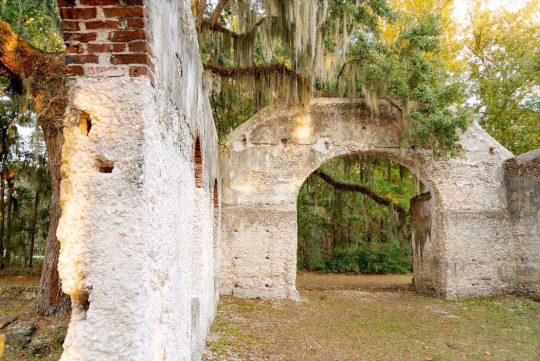
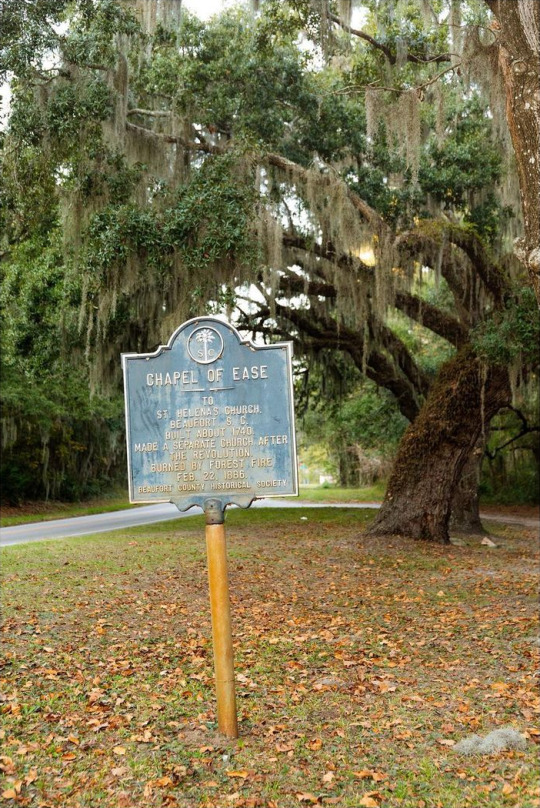
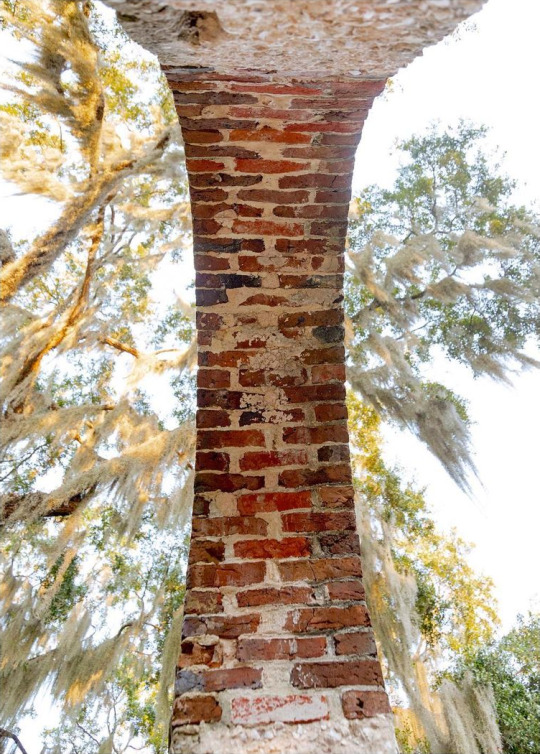
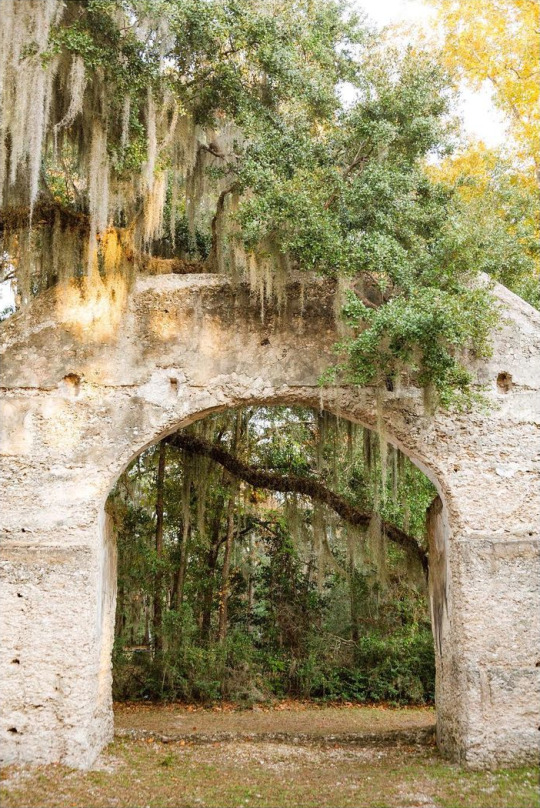
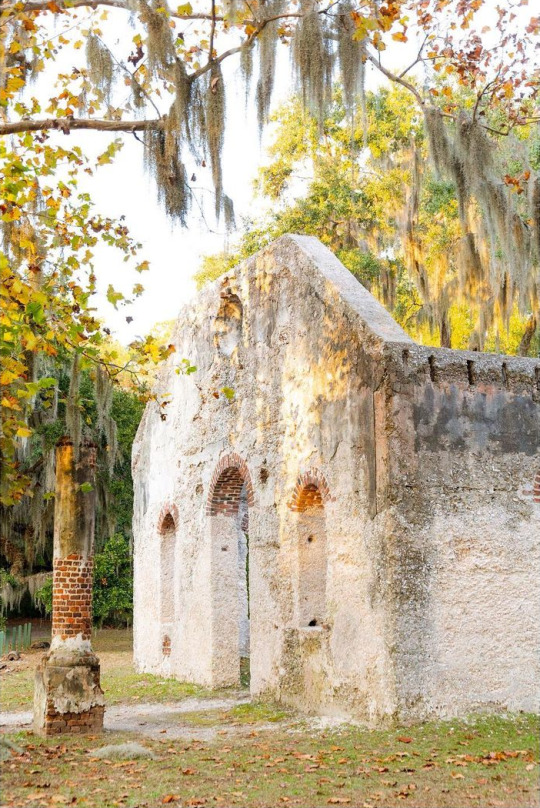
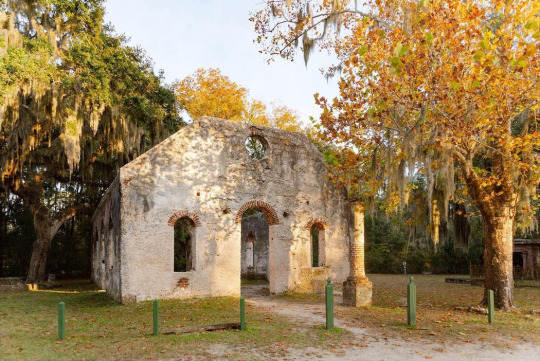
Chapel of Ease Ruins in St. Helena Island, South Carolina. Photos by Kim Graham.
108 notes
·
View notes
Text

Donna Brass artwork. Gullah culture.
5 notes
·
View notes
Text
If I must die- Translation Request
Hello! This is a very different type of post I haven’t done before but if any African American who knows one or more languages,such as: Tutnese, Yukish/Yukkish, Gullah, Kouri vini, or ormandi would like to translate the late Palestinian poet Dr. Refaat Alareer’s last poem in those languages please post in the replies or put your translation directly in the Twitter post with other translated languages! Thank you and happy translating!
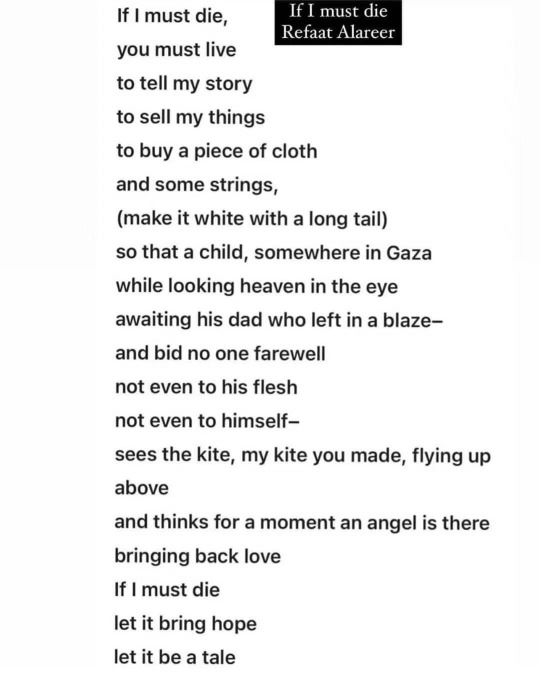
#aa culture#african american#black americans#culture#yen#african american culture#language#tutnese#yukish#yukkish#Gullah#gullah geechee#Kouri vini#ormandi#dr#dr. refaat alareer#refaat alareer
2 notes
·
View notes
Text
Very specific history.
The slaves were sold at a higher price because they knew how to grow rice. That meant many were from the same region, so she was able to find where she came from and reconnect her greater family. Made me cry.
TIL a family in Georgia claimed to have passed down a song in an unknown language from the time of their enslavement; scientists identified the song as a genuine West African funeral song in the Mende language that had survived multiple transmissions from mother to daughter over multiple centuries (x)
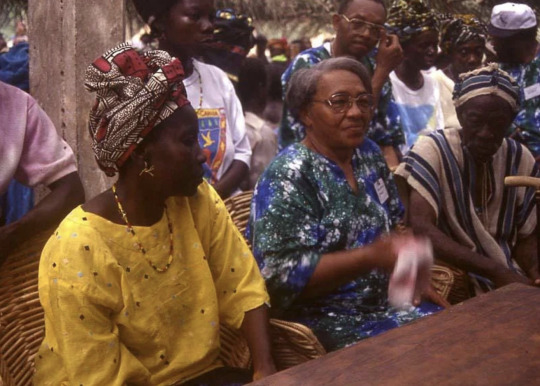
89K notes
·
View notes
Text
🎞️ INTERNET ARCHIVE: https://archive.org/embed/the-language-i-cry-in
0 notes